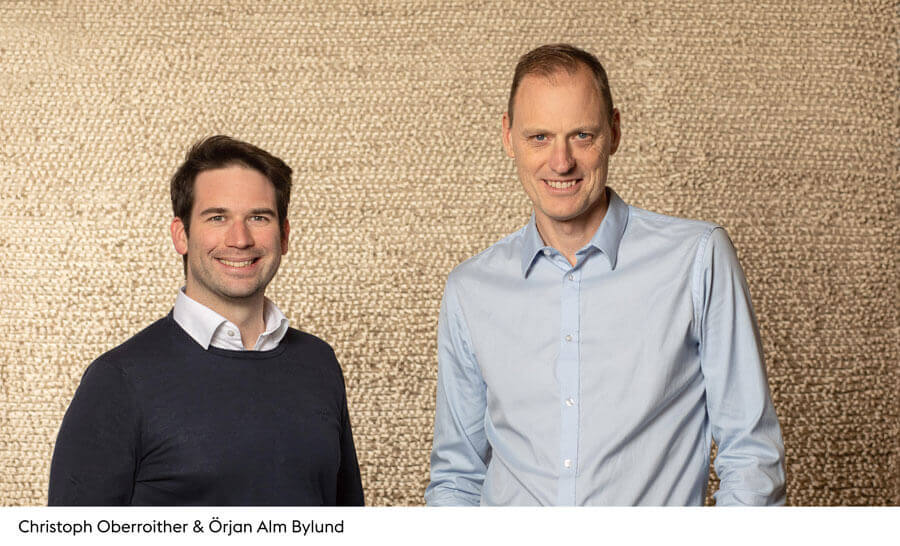Sustainable sourcing: Climate protection through sustainable procurement
Sustainable procurement is becoming increasingly important in active climate protection. At the same time, it is an essential part of any sustainable business model.
The High Performance Metals (HPM) Division is already taking this into account and has created its own sustainable sourcing pillar as part of its sustainability framework “inSPire” to keep it on the cutting edge of this complex topic.
WHY PROCURE SUSTAINABLY?
Procurement has become increasingly complex in recent years. Industries are growing, while many of the materials they rely on are becoming scarcer. Each material used by the HPM Division also comes with its own challenges and critical issues: whether it is purchasing enough high-quality scrap, special elements or alloys. Additionally, purchases are no longer based only on price and quality, but also on the environmental and social sustainability of the goods themselves. There are more opportunities to make a positive impact on supply chains in this area now than ever before. This makes it more important than ever that suppliers meet the division’s sustainability standards. Sustainable sourcing is also crucial for HPM’s business activities. More and more customers are looking for sustainably produced products, and requirements are becoming more stringent. Sustainable products are therefore an important factor for remaining competitive in the future.

WHAT DOES SUSTAINABILITY MEAN?
With sustainable sourcing, the division doesn’t just consider its sustainability targets in its own production, but also examines the influence of raw and manufactured materials, plus services and goods in general, on the sustainability of the finished products. Alongside efforts like integrating sustainability into supplier selection and developing sustainability skills, collecting and reducing Scope 3 emissions is key. Scope 3 includes all indirect CO2 emissions that occur throughout a company’s value chain and is therefore the most comprehensive and complex emissions category. Many operations need to be considered, including the mining and processing of raw materials, and the transport of goods.
At the HPM Division, this means that we not only have a major impact on the environment through our own activities, but also through our purchased raw materials, products, and services. These must be analyzed according to ecological, social, and economic aspects.
WHICH AREAS IS SUSTAINABLE PROCUREMENT FOCUSED ON?
Here are three ways we can procure more sustainably:
– Select sustainable suppliers
– Use less material, for example, by optimizing internal processes
– Purchase less new material, for example, by recycling more
Selecting sustainable suppliers: Selecting suppliers who are also committed to sustainability is critical. At the HPM Division, we focus on long-term supplier relationships and select partners who meet our sustainable sourcing criteria. By working with these suppliers, we can ensure the raw materials and supplies we use are produced and delivered in a sustainable manner. In collaboration with our suppliers, we can jointly develop solutions to improve sustainability throughout the supply chain. We work closely with industry associations and organizations to share best practices and develop common standards that promote environmental protection.
Using less material: Another way to reduce Scope 3 emissions is to optimize internal processes to use less material. This can be achieved, for example, by implementing more efficient manufacturing technologies or using materials with a longer service life. At the HPM Division, we are continuously working to improve our production processes so we can minimize material consumption while maintaining the quality of our products. Through these efforts, we not only contribute to more sustainable procurement, but also strengthen our competitiveness in the market.
Purchasing less new material: Another important approach is to promote recycling and the use of recycled materials. This helps reduce the need for primary raw materials and drives our circular economy approach. HPM is actively working to increase the amount of recycled raw materials in our products with the aim of shrinking our environmental footprint
HOW WE WILL ACHIEVE THIS: HPM’S THREE AREAS OF ACTION
- Sustainable sourcing criteria:
Our previous high requirements for quality and service were supplemented by the need for sustainably produced goods. We will review 70% of the total purchasing volume by 2025 using the voestalpine Compliance and Corporate Responsibility Checklist and evaluate it according to a defined set of rules. We will then repeat this process in close exchange with critical suppliers and review it at regular intervals.
If individual suppliers do not meet the sustainability standards, we must take action in a consistent way:
“We make every effort to find solutions with our suppliers so that our requirements can be met. In any case, it is crucial that we have detailed knowledge of suppliers, markets, and risks, and we also need access to alternative procurement options or a backup plan. If no solution can be found despite our best efforts, we may have to change suppliers,” explains Örjan Alm Bylund.
- Scope3 emissions:
As mentioned earlier, Scope 3 emissions have a major impact on the carbon footprint of our products. Ensuring transparency in this area is therefore an essential first step. First, we create an overview of how and where emissions are generated. Only then can we develop strategies to reduce or avoid them. To this end, we are currently working with state-of-the-art database values. In the future, these will gradually be replaced by verified supplier data.
- Sustainability skills & commitment:
To make sustainable procurement a success, it is important that employees are informed about our standards—specifically, the meaning behind them, their real-world implementation, and how to ensure compliance. With the help of an internal training platform, workshops and seminars, employees involved in the procurement process are trained to raise awareness of sustainability and strengthen the commitment of the workforce.
TOGETHER WE CAN MAKE A DIFFERENCE
For a company like HPM, which specializes in processing high-performance materials and operates worldwide, sustainable sourcing is crucial. The demand for these raw materials is constantly increasing. Meanwhile, we are facing ever greater challenges in terms of environmental protection and social responsibility. HPM recognizes that a sustainable sourcing policy is not only ethically necessary, but also makes long-term economic sense. By ensuring that raw materials come from responsible sources, we minimize the risks associated with environmental regulations, promote corporate credibility, and ensure that the supply chain remains stable.

“Sustainable sourcing cuts across multiple areas of the company, and many colleagues can play an active role. Sustainable sourcing is a holistic way of thinking that we want to bring to life through our daily activities. We can only tackle such a complex, far-reaching topic if we work together,” says Christoph Oberroither, Sustainable Sourcing Specialist at HPM.
